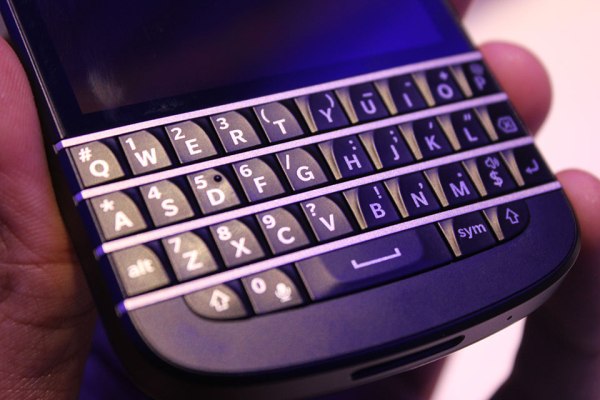It’s approaching three years since I emailed and got a reply from the late Steve Jobs. The topic of my caffeine-fueled missive that sunny day in June 2010 was the industry’s move towards touch-based interfaces and, specifically, Apple’s one-size-fits-all approach regarding the iPhone’s lack of a physical QWERTY keyboard.
I have a disability that can make touch and other physically demanding interfaces more challenging, I explained to Jobs, and whereas the mouse-driven GUI that he helped usher in with the Macintosh had inadvertently put me on a level playing field, were touch to ever become the dominant mode of input, it had the potential to turn that world upside down.
“That’s obviously a bit dramatic”, I wrote on TechCrunch at the time. “There will always be lots of different products on the market, but it’s a possibility nonetheless.” Fast forward to 2013 and what was only a possibility has all but become a reality. Survey the mobile landscape and it’s filled with people fondling their giant slabs of touch, happily typing away on glass.
At this point I know I’ll likely get ripped apart in the comments. In the battle of the physical vs virtual QWERTY, the market has spoken, they’ll say, and those who don’t favour touch are squarely out of touch. And sadly, the evidence is heavily stacked on their side of the argument.
Survey the mobile landscape and it’s filled with people fondling their giant slabs of touch, happily typing away on glass
In the first few years of the iPhone’s existence, a ton of hybrid physical QWERTY/touch smartphones from competitors entered the market, ready to differentiate themselves from Apple by talking up their superior typing experience. But they failed to stop the Cupertino juggernaught. Typing on glass, while not ideal, was good enough. Arguably it wasn’t until Android OEMs ditched their, largely, clunky slide-out keyboards and wholesale copied and then supersized Apple’s all touch form-factor, did they begin to turn back the tide.
Meanwhile, continues the argument, the likes of Nokia fell by the wayside, plagued by an antiquated user interface that, in a desperate and confused attempt to respond to the market, tried and failed to crowbar in touch before the company finally jumped onto Microsoft’s Windows Phone platform, sans physical QWERTY.
Furthermore, BlackBerry, which seemingly built its whole business off the back of its physical QWERTY-touting credentials, chose to release its first comeback device as the BB10-powered Z10, another all touch grey slab, rather than the Q10, which combines touch with a physical QWERTY in the best BlackBerry candybar tradition. It’s also been suggested that the Canadian handset maker may even view the Q10’s hybrid approach as a way to wean its traditional customers off a physical keyboard entirely, a gateway device if you will.
So yes, putting aside the fact that the market can only speak to what is put in front of it — I can’t recall a single candybar QWERTY powered by Android that was anything more than a mid-tier or low end device — it would seem that the market has indeed spoken.
But it may not have had the final word yet.
That’s if — and it’s a big if — the BlackBerry Q10, when it finally hits the market next month, surprises everybody and sells in sufficient numbers to smash through the totalitarian all touch screen. And just like the Mac had ensured before it, for this hack and others like me, 2013 won’t be like 1984 after all.
